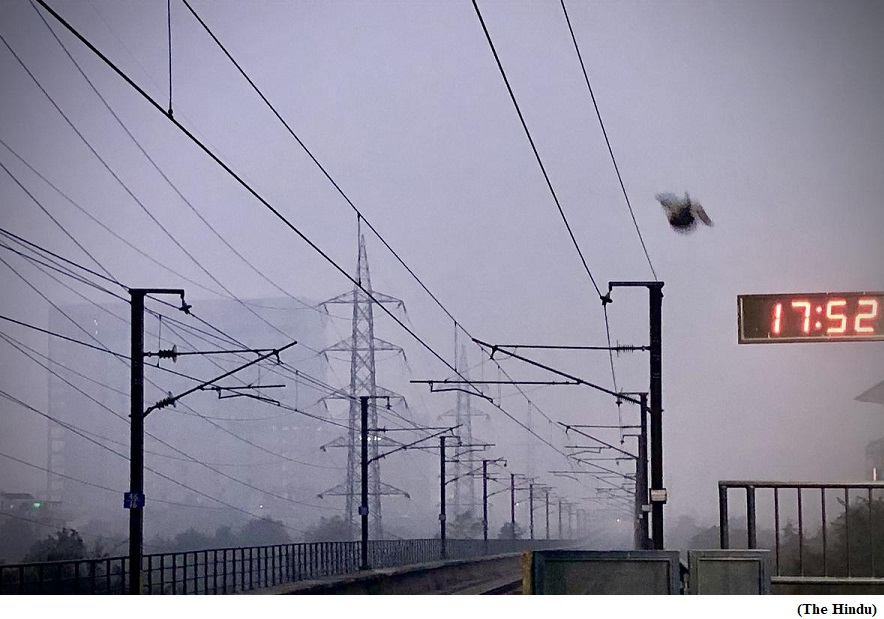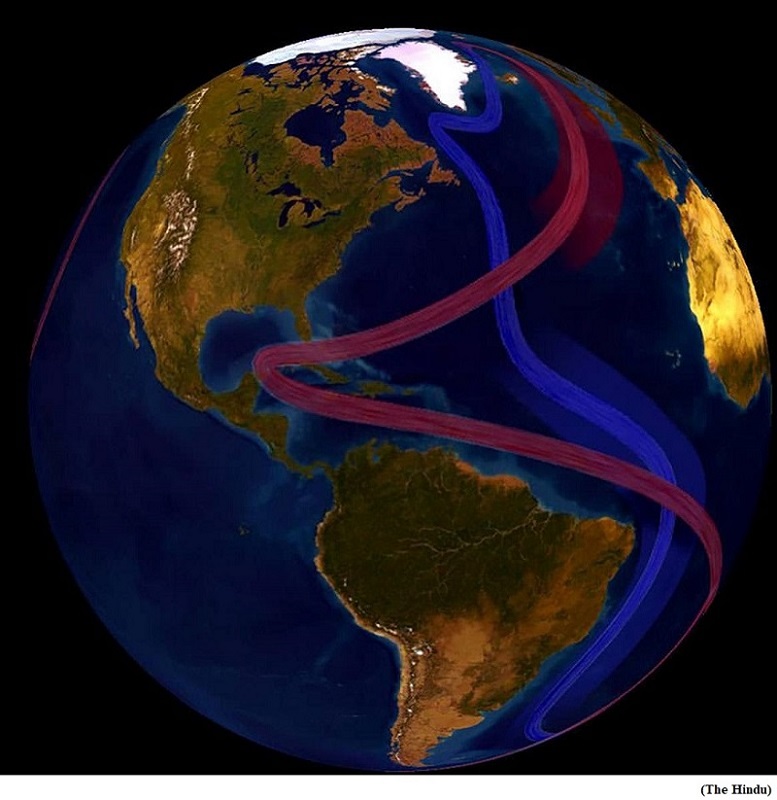Where do Indian cities stand on toxic air? (GS Paper 3, Environment)

Context:
- Four years since the Centre launched the National Clean Air Campaign (NCAP), analysts found that progress has been slow and pollution only incrementally reduced in most cities.
Context:
- Four years since the Centre launched the National Clean Air Campaign (NCAP), analysts found that progress has been slow and pollution only incrementally reduced in most cities.

Earlier studies:
- Few studies have been carried out in the Indian Ocean to reconstruct past deep water circulations based on iron-manganese crust records and authigenic neodymium isotope composition of sediment cores.
- But iron-manganese crusts are situated at deeper depthsand are bathed only by AABW, making it suitable only for the reconstruction of the history of AABW, and authigenic neodymium isotope records are available only from the Bay of Bengal region.
Recent study:
- A new study by a team of researchers from the Goa-based National Centre for Polar and Ocean Research and the School of Earth, Ocean and Atmospheric Sciences in Goa University has now sorted out the issue.
- The scientists have generated an authigenic neodymium isotope record from the Arabian Sea and reconstructed the DWC record of the Indian Ocean for the period from 11.3 million years ago (Miocene era) to 1.98 million years ago (Pleistocene era).
Observations made:
- The record shows a clear shift from the Pacific water dominated deep circulation system before about nine million years ago, to the onset of a modern-like deep water circulation system in the Indian Ocean comprising of Antarctic bottom water and northern component water during the Miocene-Pliocene transition (about six million years ago).
- The finding suggests a widespread impact of the late Miocene Central American Seaway closure on the evolution of ocean deep water circulation and validates the so-called Panama Closure Hypothesis.
What does the Centre want in Bhopal gas case?
(GS Paper 2, Governance)
Why in news?
- The Union of India calls the Bhopal gas leak tragedy the world’s largest industrial disaster. On the intervening night of December 2-3, 1984, methyl isocyanate (MIC) gas escaped from the Union Carbide India Limited (UCIL) plant in Bhopal, Madhya Pradesh, leading to hundreds of deaths.
- Thirty-nine years after the incident, a Constitution Bench of the Supreme Court led by Justice S. K. Kaul has reserved its judgment on a curative petition filed by the Centre in November 2010 to enhance the $470 million (about ₹725 crore at the then exchange rate) compensation fixed in a 1989 settlement reached with Union Carbide Corporation (UCC), now a wholly owned subsidiary of Dow Chemicals, with the imprimatur of the apex court.
- The government has sought an additional amount of ₹675.96 crore in compensation from the pesticide company. The UCC has refused to pay a “farthing more”. The court made it clear that it would not “try” the curative petition like an ordinary suit and reopen the settlement.

What is the basis for the plea for more compensation?
- The basis of the $470 million settlement reached on May 4, 1989 was that there were only around 3,000 death cases in the gas leak incident. The government’s curative petition in 2010 said the actual figure is 5,295 deaths.
- However, a fortnightly report submitted by the Welfare Commissioner, Bhopal Gas Victims, and which is a part of the case records in the Supreme Court, shows the number of deaths have increased to 5,479 as on December 15, 2022. The Commissioner’s report further said the number of cases of cancer and renal failure were 16,739 and 6,711, respectively.
- The government’s chart in the apex court shows that the total number of cases of deaths, disability, injuries, loss of property and livestock have increased to 5,74,376 from the 2,05,000 “assumed” on May 4, 1989.
Is more relief possible in a curative petition?
- The firm stand voiced by the Constitution Bench against re-opening the 1989 settlement between the government and UCC finds its roots in the limits placed on curative jurisdiction.
- The curative plea is a remedy evolved by the Supreme Court in the 2002 judgment in the Ashok Hurra versus Rupa Hurra case. It is the rarest-of-rare remedies when “the duty to do justice shall have to prevail over the policy of certainty of a judgment and declining justice would be oppressive to judicial conscience and perpetuate an irremediable injustice”.
- A party can take only two limited grounds in a curative petition; one, that he or she was not given an opportunity to be heard, and two, that the judges were biased.
- A curative petition, which follows the dismissal of the review petition, is the last legal avenue open in the Supreme Court. The government had not filed a review petition, but directly came for curative relief in 2010.
What are the rival contentions?
- Attorney General of India has urged the court to look beyond the conservative principles of law, that is, look beyond the restrictions of the curative jurisdiction, to deliver complete justice to the victims by directing the UCC to pay up. He has argued that the government did not want to “re-open” the 1989 settlement but “add” to it.
- The government said the Parliament had placed it in the role of the protector of the victims by enacting the Bhopal Gas Leak Disaster (Processing of Claims) Act of 1985. It has an obligation to protect the victims’ interests “effectively and equitably”.
- The UCC, through senior advocate Harish Salve, countered that the settlement was arrived at on the basis of a “consent decree” sourced from a suit. If the decree was set aside, the suit proceedings should be restored.
- The liability of UCC for the tragedy was never established. There was no “re-opener clause” in the settlement. More and more liability cannot be piled on to his client as and when fresh data was revealed.
What did the court observe during the hearing?
- At the heart of the legal dispute is a paragraph from the October 3, 1991 order of the Supreme Court. The paragraph discussed the “unlikely event” of the 1989 settlement funds being found insufficient to satisfy the claims of all the victims.
- While stressing that the victims should not be left to “fend for themselves”, the court, in 1991, had said the “reasonable way to protect the interests of the victims is to hold that the Union of India, as a welfare state and in the circumstances under which the settlement was made, should not be found wanting in making good the deficiency, if any”.
- The government has interpreted these words by saying that it has done its duty by coming to the court with a plea to direct the UCC to top-up the compensation amount. The court, in turn, said if the government, as a welfare state, felt the victims were entitled to more, it should pay them.




